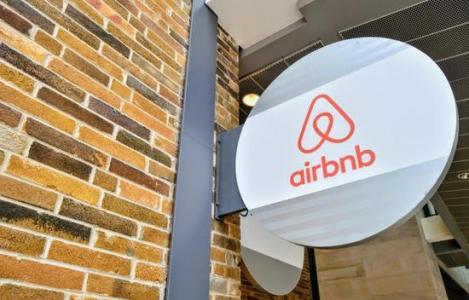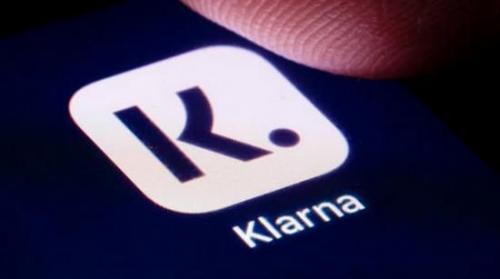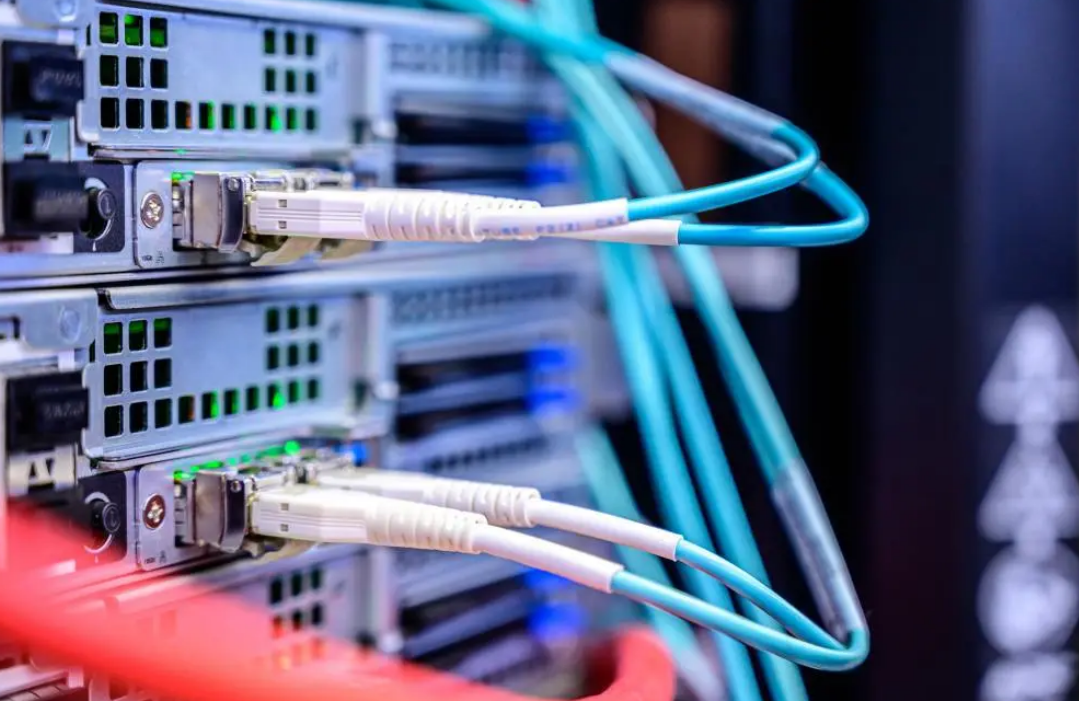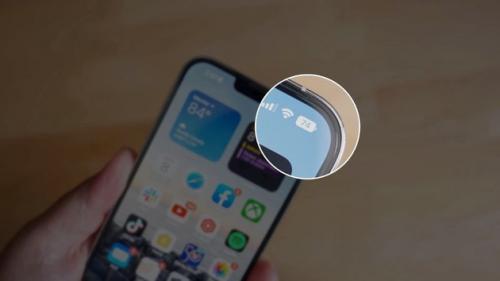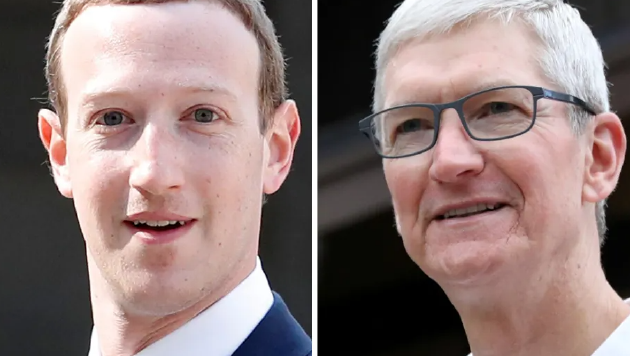your current location is:Home > Finance > depthHomedepth
Apple mobile phone "high-end positioning" methodology
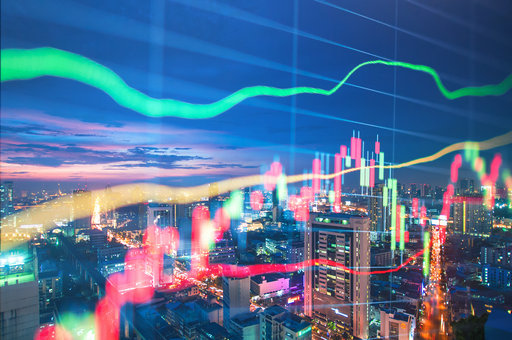
Apple's new product launch will attract widespread attention from the industry and users, and will also cause a lot of doubts and disputes, but the ultimate reality is: the more expensive Apple phones are, the better they are.
Since the first-generation iPhone was born in 2007, it was priced at US$499 (about 3,300 yuan), and the price has been rising since then, and the starting price of the iPhone 14 Pro Max, which will be released on September 16, 2022, has reached US$1,099 (domestic The price is 8999 yuan), the top version is priced as high as 1699 US dollars (the domestic price is 13499 yuan), and the sales volume has also soared. In 2021, the iPhone 13 series has pushed the iPhone to set an annual sales record of 237 million units. At the same time, higher and higher selling prices have also increased Apple's revenue and profits. With its global smartphone market share of only 15%, it has captured 75% of the global mobile phone market's profits.
At the end of 2020, data released by Tokyo research institute Fomalhaut Techno Solutions showed that the cost price of the hot-selling iPhone 12 Pro at that time was only 2,665 yuan, but its price was as high as 8,499 yuan, although the cost here did not include design, labor, promotion and other expenses. , but such a high gross profit margin is enough to attract the admiration and doubts of many peers.
The more expensive the Apple iPhone, the better it sells. Some people say that this is because Apple mobile phone users are very loyal, and they are willing to pay no matter how expensive it is. But if you look closely, you will find the following questions: Why are Apple mobile phone users so loyal? Why do many people compare their money with other brands of mobile phones in the face of the increase of several hundred yuan, but when it comes to the Apple iPhone, they ignore the increase of one thousand yuan and spend a lot of money? What is Apple doing right with the iPhone? What is Apple's methodology for "selling high"?
1. market card battle
High-end, innovative image is deeply rooted in the hearts of the people
The selling price is getting higher and higher, but the sales volume is getting better and better. This seemingly abnormal phenomenon first comes from the success of Apple's iPhone high-end mobile phone market positioning and card position. For example, the price of the iPhone 14 starts at 5,999 yuan, which is a high price point that most mobile phone brands cannot reach.
Counterpoint data shows that in 2021, the global average price of mobile phones (ASP) will exceed 2,000 yuan. Among them, the average price of Apple mobile phones is 5,314 yuan. Among domestic mobile phone brands, the average price of vivo mobile phones is 1,651 yuan, OPPO 1,513 yuan, and Xiaomi 1,243 yuan, ranking first in global sales. The average price of Samsung's mobile phone is only 1776 yuan, less than one-third of Apple's mobile phone. It is equivalent to Apple's iPhone, which has stuck in the price C position with a cliff-like advantage, and has driven the global average price of mobile phones to exceed 2,000 yuan by itself.
In other words, in terms of the actual average transaction price, Apple is the only high-end mobile phone brand in the world.
Fifteen years ago, Jobs showed the world a revolutionary communications device that changed the company and the world—the iPhone. Jobs described the iPhone as the fusion of three revolutionary products: the iPod with touch controls, the mobile phone, and a breakthrough Internet communications device. Jobs also confidently said at the time: "Apple will reinvent the mobile phone."
Indeed, before Jobs launched the Apple mobile phone, the mobile phone in our impression was still a Nokia-like feature phone with a small screen and a physical keyboard, as well as a number of copycat phones. At that time, the core functions of feature phones were to make calls, send text messages, and occasionally listen to a song. The traffic was measured in KB; today's smart phones have become a must-have all-round terminal for people to read, chat, socialize, and entertain. A variety of functions are readily available, and the traffic has been measured in GB.
In fact, the current era of smartphones was started by Steve Jobs and Apple’s iPhone. When Nokia and many other feature phone giants and copycat brands were fighting in the thousand-yuan gear, Apple launched the epoch-making smartphone iPhone, which sold The price directly exceeded 3,000 yuan, far higher than other competitors.
From the very beginning, Apple's iPhone has not competed on the same stage as other mobile phone brands, and it has opened up a vast new world by itself. Even though other mobile phone brands have launched various smart phones later, Apple’s smart phones are preconceived as the first mover or even the definer. In the minds of many consumers, Apple is equated with keywords such as high-end, innovation, and intelligence.
Classical economic theory tells us that although the initial investment and risks of technological innovation are huge, and there may be a long period of market silence and user education and promotion costs, once the market opens and the image of a technological innovator is established, the benefits will be Extensive and far-reaching, such as quickly occupying more market share, such as obtaining super high profits in the early stage of the market, such as leading industry technical standards and manufacturing standards. More importantly, it may also be to establish a unique high-end brand image in the hearts of global users.
Since then, with the entry of many giants, the stage of smartphones has become more and more crowded, and PK has become increasingly fierce. But Apple has been intentionally creating a persona of its innovation leader. The most typical is that Steve Jobs will always coolly say "One More Thing" (one more thing, alluding to a surprise) at the end of the new product launch every year, and then bring the biggest surprise.
The functions such as fingerprint unlocking and biometric identification that we are familiar with are all brought to us by the iPhone. Even today, when Apple is complaining about "toothpaste-squeezing innovation", the latest iPhone 14 series still brings dazzling designs - smart island, perforated front lens, always-on display, dynamic refresh rate, etc.
However, in the reality that innovation is becoming increasingly weak, how Apple sets prices is also based on market feedback. Apple understands that if the price is too high or exceeds the psychological expectations of consumers, the iPhone will be greeted by declining sales, which will be severely beaten by reality.
In this regard, Zhang Yi, CEO of iiMedia Research, told a reporter from China Business News that the iPhone has unique advantages in the high-end mobile phone market. As long as a product can stand up in the high-end market, it can continue to harvest users in this high-end market. , and reap high profits. From the current point of view, the iPhone's share in the global high-end mobile phone market is quite stable, which is the guarantee and premise behind the high price of the iPhone.
The advantage of sticking to the high-end brand image is that not only mobile phones are expensive, but also iPhone peripherals and other Apple products. So we see Apple's 98 yuan lanyard, 145 yuan polishing cloth, and 848 yuan charging Protective cases are also selling well.
2. consumer psychology
Durable Goods and Status Symbols
On many occasions, the feeling of carrying an international brand bag is completely different from that of an ordinary brand or even a no-name bag. Correspondingly, as a tool that people are inseparable from in daily life, smartphones actually play the functions of famous brand bags, jewelry, watches, etc. in the past.
Today's mobile phone is no longer just a mobile tool for communication, but an all-round terminal that fully covers people's food, clothing, housing, and transportation. It is inseparable from all aspects of work and life. For such a terminal, users are willing to make a certain investment. Mobile phone is not only a communication tool, but also partly represents the user's taste, preference, identity and even attitude.
Therefore, for many fruit fans, Apple’s high-end brand tonality and distinctive scarcity, buying a higher-priced iPhone is not only about the actual experience, but also brings a kind of inner satisfaction and pleasure.
At the same time, mobile phones are a durable consumer product that lasts for years. Users are willing to spend more money to buy a mobile phone that is easy to use and durable, especially under the background that the user replacement cycle is constantly getting longer. According to the data released by Counterpoint, the average replacement cycle of users has exceeded 31 months, while this data was 16 to 18 months in earlier years.
Therefore, for Apple, the most important point is to maintain sufficient software and hardware ecology and easy-to-use features of products, as well as maintain a high-end, affordable brand image. In 2014, Angela Ahrendts, CEO of the old British luxury brand Burberry (Burberry), joined Apple as senior vice president, responsible for Apple's retail business, reporting directly to CEO Tim Cook.
One of the biggest changes she brought to Apple is to bring more luxury to the technology giant. The most typical example is that Apple's offline experience store has added WiFi, comfortable tables and chairs, and beautiful space. Design, etc., to enhance the comfort and respect of the customer experience. This actually reflects that from that time or even earlier, the technological innovation breakthrough of Apple's mobile phone has entered a bottleneck period and needs to be maintained in more ways.
A common feeling now is that mobile phones are getting more and more expensive. Counterpoint data shows that in 2021, the global average price of smartphones will reach US$322 (about RMB 2,046), a year-on-year increase of 10%. Behind the rise in average prices, there are also many domestic Android mobile phone manufacturers.
In the context of limited market sales, increasing unit prices to increase revenue and profits has become a realistic choice for mobile phone brands. Zhang Yi said, "Under the background of rapid market growth in the past, you can win by taking more volume and taking more market share, and you can also ensure profits by taking volume, but after entering the stock market, profits can only be obtained from the price, and the profit is small. This traditional mobile phone profit model with more sales may not be applicable in the future."
However, for users, compared with the collective "price increase" of some brands, Apple's quiet price increase seems more acceptable. After all, each brand has its own relatively fixed consumer groups or fans. Consumer groups that focus on cost-effectiveness have a poor tolerance for price increases, and the high-end brand of low-end mobile phones should gradually change the inherent cognition of consumers. , requires long-term and valuable accumulation and breakthroughs to be possible.
Today, Apple is continuously extending the front line of the iPhone and launching various versions. Starting from the $499 price of the first-generation iPhone in 2007, there are more and more iPhone categories, from SE version, to mini models, digital models, Pro models, Pro Max models, etc., the prices are also rising. On the one hand, the price of the low-end version has dropped to seize the users and markets of other mobile phone brands; on the other hand, the price of the high-end version has continued to rise to obtain higher revenue and profits.
Taking the latest iPhone 14 as an example, there are four models: iPhone 14, iPhone 14 Plus, iPhone 14 Pro and iPhone 14 Pro Max, with a total of 14 versions. Among them, the entry-level iPhone 14 is priced at 5,999 yuan, and the top version is up to 13499 yuan. It is equivalent to a mobile phone that fully covers the market from more than 5,000 yuan to 14,000 yuan.
Interestingly, the sales of the low-end version of the iPhone 14 were not good. First, there was news that the scalper had shipped it backwards, and then the Foxconn Zhengzhou factory, the main foundry of Apple's iPhone, reported that some iPhone 14 production lines were adjusted to iPhone 14 Pro production lines. In layman's terms, the low-priced iPhone 14 did not sell well, but the iPhone 14 Pro, which cost tens of thousands, was a hot sale.
According to Ming-Chi Kuo, a well-known Apple analyst, Apple will change its business strategy. Only the iPhone Pro models will be equipped with the latest and strongest technology, and other details such as the new design will only appear on the iPhone 14 Pro. Apple hopes to guide users to buy the most advanced technology. Expensive iPhone.
It's not enough to buy the regular Pro version at the same time, you have to spend more for the highest-end Pro Max line. And through this series of operations, the effect is also obvious. The previous iPhone 14 offline pre-order survey showed that the iPhone 14 Pro series in China accounted for about 85% of the order allocation, and the iPhone 14 Plus order allocation was only about 5%.
"Introducing a castrated version of the mini version or standard version of the iPhone to reduce costs and prices, on the one hand to seize the market of other mobile phone brands, on the other hand as a publicity stunt to attract more users' attention and discussion, and even the formation of the iPhone is not very good. The illusion of price increases or even price cuts,” a technology analyst who has long been concerned about the mobile phone market told reporters. At the same time, by placing its latest innovations, technologies and functions on high-end or even top-end versions, users are induced to buy higher-priced mobile phones. version, reaping considerable revenue and profits.
3. Difference Barrier Theory
No one has me, someone has me
But in the final analysis, the high-priced iPhone can attract fruit fans to buy it one after another. It can only show that they think the iPhone is good enough and easy to use, and it is worth spending the money, which is "the truth of being expensive."
Corresponding to the brand positioning and high price of high-end mobile phones, since the release of the original iPhone, regardless of the overall design, material configuration and system ecology, the iPhone does have its own set of standards, and each new generation of iPhone brings more or less. Some innovations are unique in the mobile phone market where players are crowded and involution is serious.
"Father of Competitive Strategy" Michael. Porter (Michael E. Porter) once put forward the concept of "differentiated competition", pointing out that enterprises can achieve differentiated positioning based on user needs and existing resources of the enterprise, use differentiated products to open the market, differentiated sales promote the market, and differentiated services. Occupy the market and realize the interaction between them, gain a competitive advantage that other competing products cannot match, and avoid the homogeneous competition in the market.
It can be said that Apple is a model of differentiated competition. Regardless of system ecology, hardware, software, design, etc., Apple iPhone has its own unique advantages. Unique features of the iPhone.
Smartphones originally have two high thresholds, one is the core hardware such as chips, and the other is the mobile phone system. With the advancement of the chip foundry model in the early years and the open source opening of Google's Android system, these two thresholds completely flattened.
As a result, no-name and fake brand mobile phones have sprung up in the market, and everyone is desperately fighting at the price of 1,000 yuan; on the other hand, the threshold of the mobile phone industry has been greatly reduced, and costs and prices have become very transparent. It can continue to roll in the latest configuration and cost-effective.
The first-generation iPhone launched at this time not only has a clean and safe iOS system and ecology, but also subverts traditional mobile phones in terms of form and function. "The touch still allows most people to instantly recognize who is an iPhone. Perhaps it was also from the iPhone that people realized that the appearance of a mobile phone is not optional, it is not only an industrial product, but also a work of art.
When it comes to the characteristics of the iPhone, the first thing people think of is the Apple iOS system. In the Android system that is the same in the mobile phone market, the excellent message push mechanism, the "tombstone" mechanism, and the sandbox mechanism are all ensuring the safety and smoothness of the iOS system. Compared with the various APPs and built-in advertisements pre-installed in the current Android mobile phone system, the iOS system is indeed clean enough to become the differentiated trump card of Apple mobile phones.
However, after years of optimization and adjustment, the Android system has become more and more mature, and has been comparable to the iOS system in many user experiences, and has more advantages in ecological richness and compatibility. At the same time, the appearance and design of the candy bar and large screen of the iPhone have also been used for reference by many brands, and the appearance and design of various mobile phone brands are getting better and more similar.
Against this background, Apple is also striving to create other differentiated advantages, such as super-large linear motors that other mobile phones are still difficult to surpass, advanced Gorilla Glass panels, excellent SOP packaging, and excellent tuning standards.
When it comes to the differentiated advantages that Apple has built over the years, the most prominent is the chip. Its self-developed A-series processors are benchmark-level in single-core performance and power consumption. The chip has also become one of the biggest selling points of the current iPhone.
Similar to the iPhone, Huawei mobile phones are by far the most successful high-end brand among domestic brands. It can even be said that it is also the most successful brand in the global mobile phone industry in recent years. In 2018, 14 years after the launch of the first Huawei mobile phone, the annual sales volume of Huawei mobile phones exceeded 200 million units for the first time. In 2019, it increased to 240 million units, ranking second in the world and first in China. IDC data shows that from 2015 to 2019, iPhone sales shrank from 230 million units to 190 million units year by year, and Huawei's mobile phone sales surpassed Apple's in 2019. At the same time, Huawei mobile phones are the first domestic mobile phone brands to sell for 5,000 yuan. In the first half of 2020, in the domestic high-end smartphone market in the price range of more than 600 US dollars, Huawei won 44.1% of the market, and Apple lost 44.0%. One chip.
Whether it is an iPhone or a Huawei mobile phone, a key reason for them to gain a firm foothold in the high-end market is their sufficient differentiation advantage. Just as Apple has advantages in its own chips, software and hardware ecology, etc., when other Android phone brands are still in stockpiling and price PK, Huawei mobile phones have launched unique Kirin chips, Hongmeng system and inherent advantages in 5G communication technology.
Take the hard road that no one wants to take, and it turns out to be the right road in the end. Take chips as an example. In April 2008, Apple acquired IC design company PA for $278 million. Semi, started the road of self-development of chips early. As early as 2006, Huawei HiSilicon began to develop its own mobile phone chips. After years of exploration and trial and error, hundreds of millions of dollars have been invested.
Today, with the rising product prices and market share, Apple's market value has also successfully exceeded 3 trillion US dollars this year to reach the top of the world, becoming the maverick.
Observed
Apple in the "Five Forces Model"
Porter's Five Forces Model was proposed by Michael Porter in the early 1980s, and is currently the most classic theoretical framework for analyzing the competitive environment of industrial enterprises. These five forces are the competition of competitors in the same industry, the threat of potential competitors, the threat of substitutes, the bargaining power of suppliers and the bargaining power of buyers.
First of all, from the perspective of competition among competitors in the same industry, the current global mobile phone market is a typical monopoly market of leading companies. The top five mobile phone brands have a combined share of more than 70%, and their share is relatively stable. Apple's differentiated competitive advantage is obvious, and competition is not easy. Intense; from the perspective of the threat of potential competitors, the mobile phone industry needs strong capital, technology, talent accumulation and word-of-mouth effect, and there are fewer threats in this regard; from the perspective of the threat of substitutes, because people's consumption habits, including computer It is difficult to replace the mobile phone with possible substitutes such as , tablet and so on. In the foreseeable future, the mobile phone will still be the strongest terminal for one person. From the perspective of the supplier's negotiating ability, one of Apple's core advantages is that Its supply chain control ability, Apple's upstream and downstream suppliers are highly dependent on Apple, weak negotiation ability, and can even be said to be controlled by Apple; high-end mobile phones have a strong premium ability, and the loyalty of fruit fans is high, often Apple's new phones There will also be a phenomenon that one machine is difficult to find and scalpers will increase the price, and the bargaining power of users is very weak.
All of these have contributed to the high growth and profitability of Apple's iPhone mobile phone industry, which is also the logic behind Apple's market value breaking through 1 trillion, 2 trillion, and 3 trillion US dollars in recent years, reaching the top of the global market value list. It is also the underlying reason and the underlying reason why the iPhone sells more and more expensive, but it sells better.
Objectively speaking, whether it is an iPhone or an Android phone, the price increases over the years are to some extent understandable. After all, 5,000 yuan more than 10 years ago and 5,000 yuan now are obviously not the same concept; moreover, the screen, chip, memory and other hardware of mobile phones have undergone dramatic improvements over the years. For example, the memory of the original iPhone was 4GB, and now it is 128GB. Get started. In recent years, while the price of mobile phones has increased, the software and hardware, quality and experience of mobile phones have been improved.
But Apple is far from the point where it can sit back and relax. This also comes from the weakening of Apple's own differentiated competitive advantages and the continuous optimization and catch-up of major Android phone manufacturers.
An indisputable reality is that whether it is technological innovation or other differentiated advantages, Apple is relatively weakening. Apple's new product launch is the best microcosm. It used to be an annual technology event and full of expectations. It has become a spit conference for all parties to "squeeze toothpaste-style innovation" and "re-shell rebirth".
On the contrary, the Android mobile phone brand has contracted more innovations such as water drop screens, folding screens, punched screens, and under-screen cameras. After years of optimization of the Android mobile phone system, the user experience has been comparable to the iOS system in all aspects, even in the ecological environment. It is better in terms of richness and so on. At the same time, Android phone manufacturers have made rapid progress in capital, technology, talent, design, etc., and they still have a clear price advantage over Apple.
Maybe one day, which brand launches a disruptive product like the original iPhone, or there are more strong competitors, it will pose a powerful threat to Apple's existing structure. Huawei's mobile phone has formed a strong challenge to Apple's iPhone in just a few years, which is the best example.
Every time Apple releases new products or news, people's discussions are always fierce, and they are divided into two distinct factions. Supporters say that Apple's ecological advantages and ease of use, and the reason why it is expensive; opponents accuse Apple of harvesting leeks at a high price, Pay IQ tax. In fact, it is not necessary, because there is no standard answer in itself, and each user's appeal is obviously different. Apple and Android phones also have their own characteristics and advantages. It is difficult for anyone to convince the other. . As the saying goes, "Let God's to God, and Caesar's to Caesar", the market and time will give the relatively fairest answer.
related articles
Article Comments (0)
- This article has not received comments yet, hurry up and grab the first frame~






